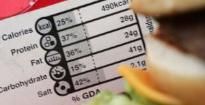FDA Wants Calorie-Labeling Rules
Chain restaurants, convenience stores, concession stands and vending machines would soon have to display calorie information for the food products they sell under rules proposed Friday by the Food and Drug Administration.
“We do see this as an important step in providing consumers with information they can use in choosing healthy diets and fighting obesity,” Michael R. Taylor, deputy FDA commissioner for foods, said in describing the nation’s first federal menu-labeling law.
The rules, required by Congress in a little-noticed provision of the health-care reform law passed last year, are subject to a public comment period before they are finalized and implemented in 2012, Taylor said.
A notable exception under the proposed rules are movie theaters, which earn up to a third of their income from sales of popcorn and other items at their concession stands. Movie theaters have lobbied the FDA in recent months, saying they should not be subject to the law because people go to theaters to see movies, not to eat meals.
That means moviegoers at Regal Theaters, the country’s largest chain with 548 theaters, will not be confronted with the fact that a medium tub of unbuttered popcorn can contain 1,200 calories, according to a 2009 laboratory analysis ordered by the Center for Science in the Public Interest. That’s half the recommended total daily caloric intake for a 45-year-old man.
Under the regulations, any restaurant with 20 or more locations offering standard fare — including table-service establishments, fast-food outlets, bakeries and coffee shops — would have to disclose calories “clearly and prominently” on menus or menu boards, including drive-through order stations. Other nutritional information, such as sodium and fat content, would have to be available upon request.
Vending machines would have to clearly display the calorie counts for each item. The information must be in close proximity to the machine so that consumers can see the calories as easily as the price or selection button number, according to the FDA.
Food industry groups, which have been meeting with the FDA over the past year and have anticipated the rules, said a federal law is better than a patchwork of state and local regulations. Menu labeling laws have been passed in 18 states and localities, including Montgomery County, Md., California and New York City, and some restaurant chains already voluntarily provide the information.
Click here to read more.


